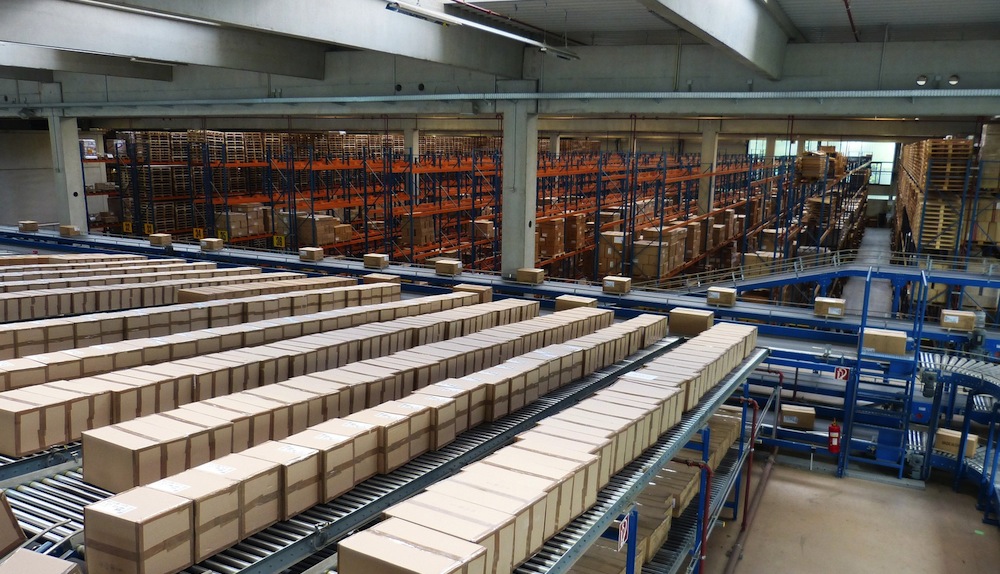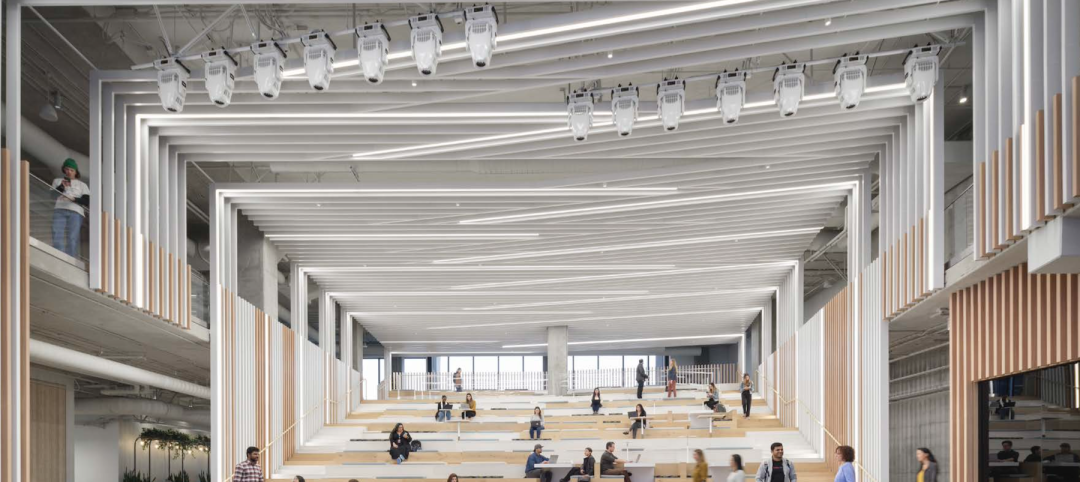“Ignore the Dow. Focus on the fundamentals.”
That’s Cushman & Wakefield’s sanguine advice in its latest “U.S. Macro Report,” in which the real estate services giant offers a bullish forecast about America’s economy, as well as the investment climate for real estate construction and transactions.
C&W provides a positive spin on investors’ two main concerns right now: the impact of China’s slower economic growth and tumbling global oil prices. The report points out that U.S. direct investment in China is currently $65 billion versus the $6 trillion the U.S. has invested globally. Only 9.2% of U.S. exports are sent to China, and exports account for only around 10% of all goods and services produced within the country. “The macroeconomic consequences of a hard landing in China tend to be overstated,” says C&W, which believes that China’s GDP growth could fall below 3% (it was 6.9% in 2015, a 25-year low) without causing a recession in the U.S.
Oil price erosion is a more significant threat to C&W’s baseline outlook, the report concedes. But it believes that declines in oil prices are ultimately a net positive for the U.S. economy because those declines spur increased consumption. “Every penny decline in retail gasoline prices adds more than $1 billion to consumer spending over the course of the year, according to Moody’s Analytics,” states the report. Its forecast calls for oil prices to average just over $40 per barrel in 2016. “That will add about 50 extra basis points to U.S. GDP growth, creating up to 23.8 million sf in additional demand for office and industrial space.”
C&W foresees a “quite healthy” 2.4% increase in U.S. GDP this year. It expects 2.6 million and 2.3 million nonfarm jobs to be created in 2016 and 2017, bringing the unemployment rate down to around 4.5%. “Wage growth and inflation should trend upwards more meaningfully at the same time, helping to buoy retail sales, consumer spending and consumer confidence.”
People are also getting their personal balance sheets in order. The household debt ratio—which measures debt affordability—is at its lowest point since 1980. Wages and total compensation rose by over 2% in 2015, the first time since 2008 those indices exceeded 2% growth.
A more confident, higher-spending consumer should benefit the industrial sector, which has enjoyed record-setting demand for warehouse and distribution space over the past few years. C&W projects that 220 million sf of space will be added this year, despite declines in manufacturing activity. “Overall vacancy will tighten further, falling from 7.5% in 2015 to 7% in 2016. This is on par with the tightest conditions ever observed in the sector; in 2000, the national vacancy rate was 6.9%,” the report states.
C&W expects that the economy will create 713,000 office-using jobs this year, and 666,000 in 2017. These estimates are slightly down from the 812,000 office jobs created last year, and C&W does expect slower aggregate demand for office space, albeit with a lag. Over the next two years, it expects 140 million sf of new office product to be delivered versus the almost 160 million sf of space that will be absorbed. “As a result, vacancy rates will continue to decline, falling from 14.2% in 2015 to 13% in 2017, the lowest annual reading since 2007.” Rent growth will accelerate to 4% this year and 4.5% next year. By 2018, new development should catch up with decelerating demand.
Positive consumer spending should also help fuel the retail sector. Net absorption is expected to average around its 2015 level (40 million sf) for the next two years, and focus on Class A product or new space. Vacancy is expected to decline from 7.7% in 2015 to 7% in 2016, and bounce below the 7% mark at times during the year.
C&W remains convinced that investors would continue to perceive the U.S. as a “safe haven” for stability and expected returns. Investors certainly showed their confidence in the U.S. economy in 2015, when investment sales volumes in the real estate sector increased by nearly 24% to $534 billion, just shy of the previous peak in 2007. “Capital markets activity is expected to be strong in 2016 and 2017 and should surpass prior peak levels assuming no major shock to the system.”
The developer acknowledges that a prolonged downturn in equity markets could short-circuit the U.S. economy, hit the consumer and end the expansion. But it doesn’t think that scenario is probable. “The fundamentals of the U.S. economy and the property markets remain on solid footing.”
Related Stories
Industry Research | Jan 31, 2024
ASID identifies 11 design trends coming in 2024
The Trends Outlook Report by the American Society of Interior Designers (ASID) is the first of a three-part outlook series on interior design. This design trends report demonstrates the importance of connection and authenticity.
Apartments | Jan 26, 2024
New apartment supply: Top 5 metros delivering in 2024
Nationally, the total new apartment supply amounts to around 1.4 million units—well exceeding the apartment development historical average of 980,000 units.
Self-Storage Facilities | Jan 25, 2024
One-quarter of self-storage renters are Millennials
Interest in self-storage has increased in over 75% of the top metros according to the latest StorageCafe survey of self-storage preferences. Today, Millennials make up 25% of all self-storage renters.
Industry Research | Jan 23, 2024
Leading economists forecast 4% growth in construction spending for nonresidential buildings in 2024
Spending on nonresidential buildings will see a modest 4% increase in 2024, after increasing by more than 20% last year according to The American Institute of Architects’ latest Consensus Construction Forecast. The pace will slow to just over 1% growth in 2025, a marked difference from the strong performance in 2023.
Construction Costs | Jan 22, 2024
Construction material prices continue to normalize despite ongoing challenges
Gordian’s most recent Quarterly Construction Cost Insights Report for Q4 2023 describes an industry still attempting to recover from the impact of COVID. This was complicated by inflation, weather, and geopolitical factors that resulted in widespread pricing adjustments throughout the construction materials industries.
Hotel Facilities | Jan 22, 2024
U.S. hotel construction is booming, with a record-high 5,964 projects in the pipeline
The hotel construction pipeline hit record project counts at Q4, with the addition of 260 projects and 21,287 rooms over last quarter, according to Lodging Econometrics.
Multifamily Housing | Jan 15, 2024
Multifamily rent growth rate unchanged at 0.3%
The National Multifamily Report by Yardi Matrix highlights the highs and lows of the multifamily market in 2023. Despite strong demand, rent growth remained unchanged at 0.3 percent.
Self-Storage Facilities | Jan 5, 2024
The state of self-storage in early 2024
As the housing market cools down, storage facilities suffer from lower occupancy and falling rates, according to the December 2023 Yardi Matrix National Self Storage Report.
Designers | Dec 25, 2023
Redefining the workplace is a central theme in Gensler’s latest Design Report
The firm identifies eight mega trends that mostly stress human connections.
Contractors | Dec 12, 2023
The average U.S. contractor has 8.5 months worth of construction work in the pipeline, as of November 2023
Associated Builders and Contractors reported today that its Construction Backlog Indicator inched up to 8.5 months in November from 8.4 months in October, according to an ABC member survey conducted Nov. 20 to Dec. 4. The reading is down 0.7 months from November 2022.

















